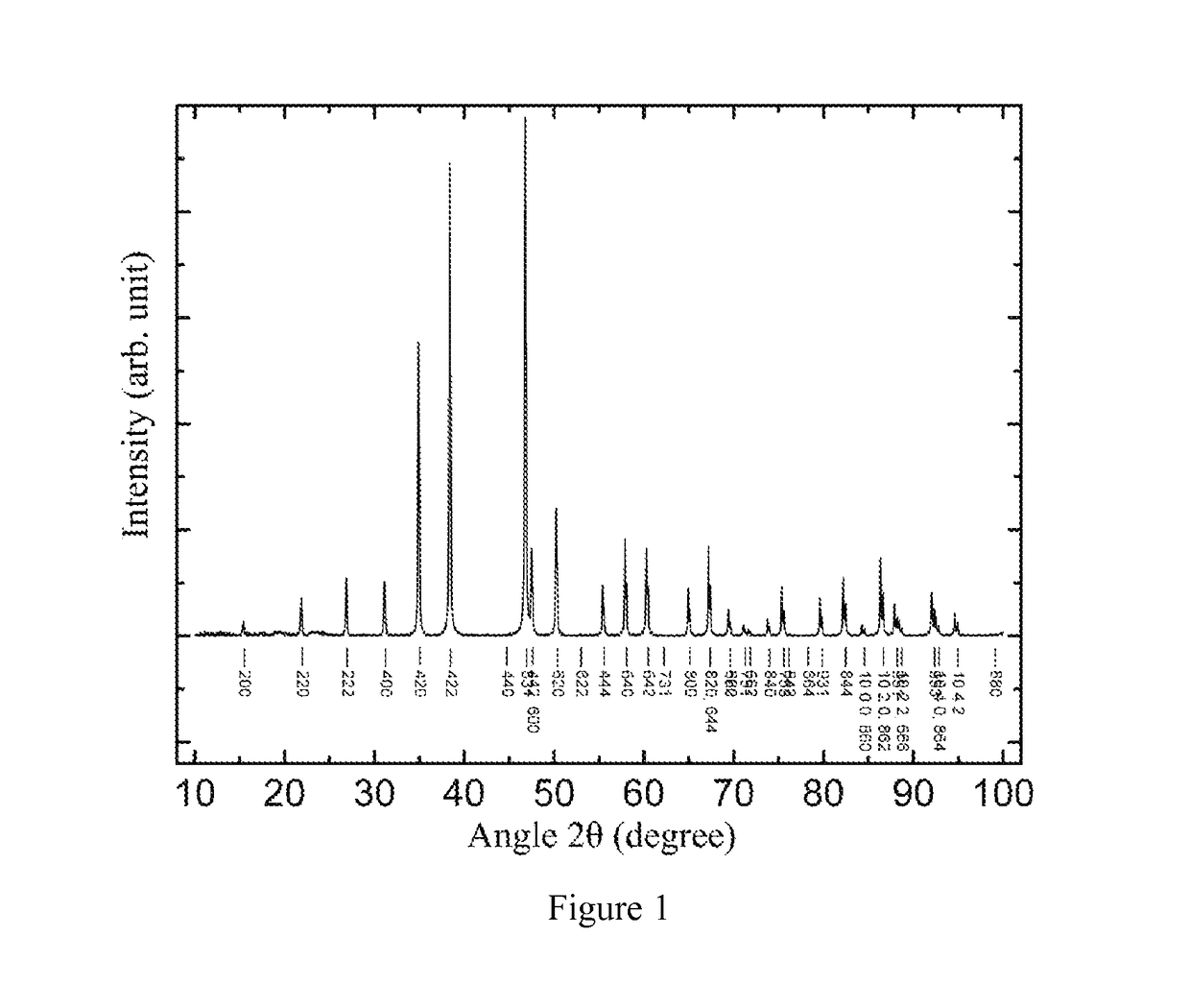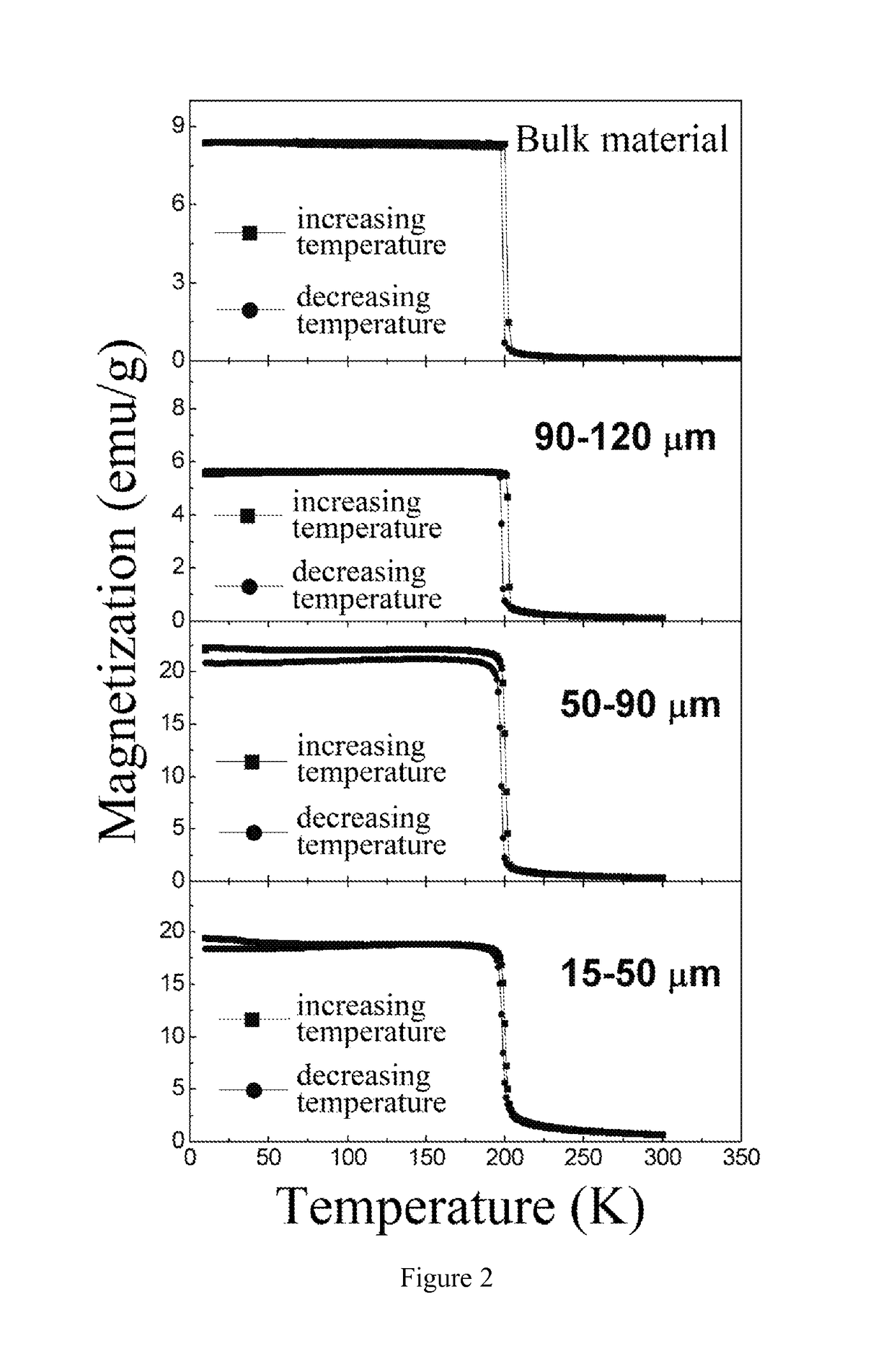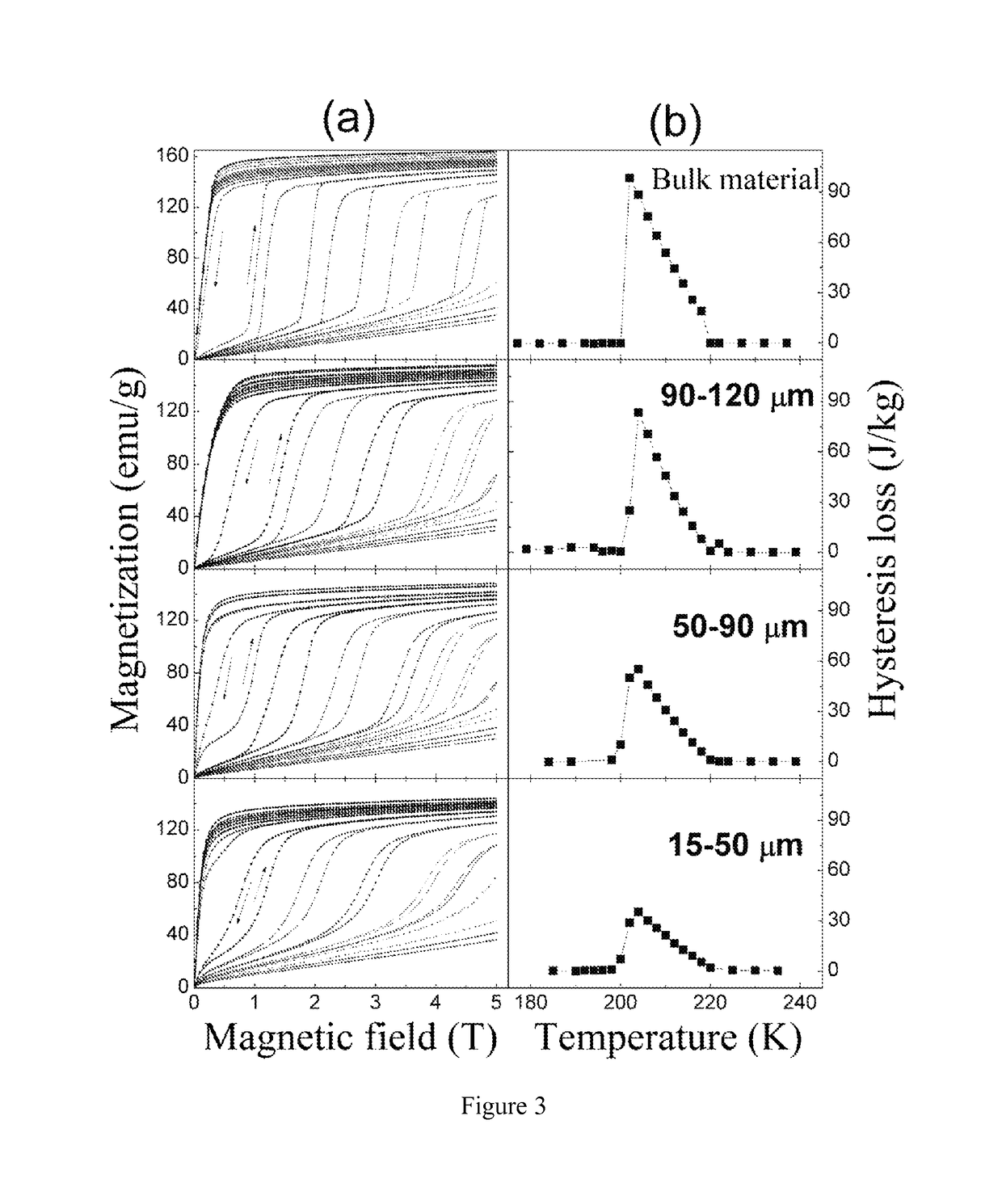First-order phase-transition La(Fe,Si)13-based magnetocaloric material showing small hysteresis loss and preparation and use thereof
a magnetocaloric material and first-order phase technology, applied in the field of first-order phase-transition la (fe, si) 13based magnetocaloric material, can solve the problems of high energy consumption and environmental pollution, high cost of gd—si—ge, and need for further purification of raw materials, so as to reduce hysteresis loss, improve refrigerating efficiency, and reduce the effect of hysteresis
- Summary
- Abstract
- Description
- Claims
- Application Information
AI Technical Summary
Benefits of technology
Problems solved by technology
Method used
Image
Examples
example 1
First-Order Phase-Transition Magnetocaloric Material La0.7Ce0.3Fe11.6Si1.4C0.2 Showing Small Hysteresis Loss
[0075]1) The materials were prepared in accordance with the chemical formula La0.7Ce0.3Fe11.6Si1.4C0.2. The raw materials included LaCe alloy, Fe, Si, La and FeC, wherein elementary La was added to make up the La insufficience in the LaCe alloy; C was provided by the FeC alloy; the amount of the elementary Fe added thereto was reduced properly since the FeC alloy contains Fe element, so that the proportion of each element added still met the requirement for the atomic ratio in the chemical formula of the magnetic material.
[0076]2) The raw materials prepared in step 1), after mixed, was loaded into an arc furnace. The arc furnace was vacuumized to a pressure of 2×10−3 Pa, washed with high-purity argon with a purity of 99.996% twice, and then filled with high-purity argon with a purity of 99.996% to a pressure of 1 atm. The arc was struck (the raw materials were smelted together...
example 2
First-Order Phase-Transition Magnetocaloric Material La0.7(Ce,Pr,Nd)0.3(Fe0.98Co0.02)11.6Si1.4 Showing Small Hysteresis Loss
[0090]1) The materials were prepared in accordance with the chemical formula La0.7(Ce,Pr,Nd)0.3(Fe0.98Co0.02)11.6Si1.4. The raw materials included La—Ce—Pr—Nd mischmetal, Fe, Si, La and Co, wherein elementary La was added to make up the La insufficience in the La—Ce—Pr—Nd mischmetal.
[0091]2) The raw materials prepared in step 1), after mixed, was loaded into an arc furnace. The arc furnace was vacuumized to a pressure of 2×10−3 Pa, washed with high-purity argon with a purity of 99.996% twice, and then filled with high-purity argon with a purity of 99.996% to a pressure of 1 atm. The arc was struck (the raw materials were smelted together to form alloy after striking) to generate alloy ingot. Each alloy ingot was smelted at a temperature of 2000° C. repeatedly for 4 times. After the smelting, ingot alloys were obtained by cooling down in a copper crucible.
[0092]...
example 3
First-Order Phase-Transition Magnetocaloric Material La0.5Pr0.5Fe11.5Si1.5 Showing Small Hysteresis Loss
[0102]La0.5Pr0.5Fe11.5Si1.5 alloy having a NaZn13-type structure was made through a process similar to that described in Example 1, from elementary La, Pr, Fe and Si, as the raw materials. The obtained alloy was crushed, grinded and screened, then a granule sample with a particle size in the range of 40˜70 μm and a powder sample with a particle size of less than 10 μm were collected. The powder sample with a particle size of less than 10 μm was further grinded, so as to generate a super fine powder sample with an average particle size of about 3 μm. FIG. 11 shows the M-T curves of the two samples i.e. the granules (40˜70 μm) and the super fine powder with an average particle size of about 3 μm. It was found that the Curie temperature of the powder sample (40˜70 μm) was 181K, same as that of the bulk material; and the Curie temperature of the sample with an average particle size of...
PUM
| Property | Measurement | Unit |
|---|---|---|
| particle size | aaaaa | aaaaa |
| particle size | aaaaa | aaaaa |
| particle size | aaaaa | aaaaa |
Abstract
Description
Claims
Application Information
 Login to View More
Login to View More - R&D
- Intellectual Property
- Life Sciences
- Materials
- Tech Scout
- Unparalleled Data Quality
- Higher Quality Content
- 60% Fewer Hallucinations
Browse by: Latest US Patents, China's latest patents, Technical Efficacy Thesaurus, Application Domain, Technology Topic, Popular Technical Reports.
© 2025 PatSnap. All rights reserved.Legal|Privacy policy|Modern Slavery Act Transparency Statement|Sitemap|About US| Contact US: help@patsnap.com



